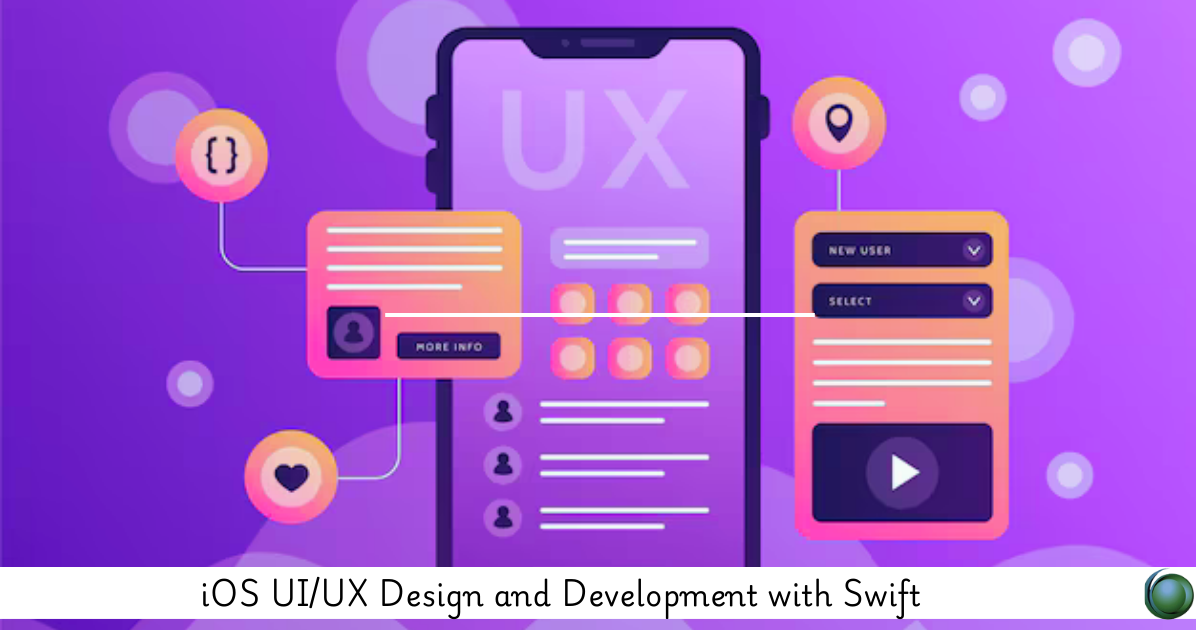Description
Introduction
The design and user experience (UX) of an iOS application play a critical role in its success. Creating an intuitive and engaging user interface (UI) requires understanding both design principles and development tools. Swift and SwiftUI, Apple’s framework for UI development, provide developers with a powerful platform to create beautiful, interactive, and responsive mobile apps. This iOS UI/UX Design with Swift course covers key principles, SwiftUI development, and best practices for building compelling iOS apps that deliver a seamless user experience.
Prerequisites
- Basic knowledge of Swift programming
- Familiarity with Xcode IDE
- Understanding of object-oriented programming concepts
- Experience with UIKit or SwiftUI (optional but helpful)
Table of Contents
- Introduction to UI/UX Design for iOS
1.1 The Importance of UI/UX in Mobile App Development
1.2 Principles of User-Centered Design
1.3 Understanding Apple’s Human Interface Guidelines
1.4 Key Differences Between UI and UX - Designing User Interfaces with SwiftUI
2.1 Introduction to SwiftUI Framework
2.2 Building Views with SwiftUI(Ref: Building Scalable iOS Applications with Swift)
2.3 Stacks, Lists, and Grids for Layout
2.4 Custom Views and Modifiers
2.5 Navigation and Transition Animations - UI Components and Controls
3.1 Common iOS UI Elements: Buttons, Labels, and TextFields
3.2 Creating Dynamic UI with ForEach and List
3.3 Using Pickers, Sliders, and Steppers
3.4 Interactive UI Components: Toggle, DatePicker, and Segmented Control
3.5 Customizing System UI Elements for Consistency - Building Responsive Layouts
4.1 Auto Layout with SwiftUI
4.2 Adaptive and Dynamic Layouts for Different Screen Sizes
4.3 Using GeometryReader for Flexible Layouts
4.4 Dark Mode and High Contrast Design for Accessibility - User Interaction and Gesture Handling
5.1 Gesture Recognizers: Tap, Swipe, Pinch, and Long Press
5.2 Handling Drag and Drop Interactions
5.3 Animating Transitions and UI Changes
5.4 Integrating Haptic Feedback and Sound - User Experience Best Practices
6.1 Optimizing App Flow for Smooth Navigation
6.2 Prioritizing Performance and Responsiveness
6.3 Enhancing Accessibility and Internationalization
6.4 Designing for Touch Gestures and Interactions
6.5 Providing Visual Feedback and User Engagement - Working with UIKit for UI Design
7.1 Introduction to UIKit and Its Role in iOS Development
7.2 Creating Views and View Controllers with UIKit
7.3 Using Auto Layout in UIKit for Responsive Design
7.4 Mixing UIKit and SwiftUI for Complex UI Components - Prototyping and Wireframing
8.1 Tools for Prototyping iOS Apps (Sketch, Figma, Adobe XD)
8.2 Creating Low-Fidelity Wireframes for Design Testing
8.3 User Flow and Interaction Design
8.4 Testing UI/UX with Prototypes and User Feedback - Testing and Debugging UI/UX
9.1 UI Testing Strategies for SwiftUI and UIKit
9.2 Debugging UI and Layout Issues in Xcode
9.3 Profiling App Performance for UI Responsiveness
9.4 User Testing and Collecting Feedback for Iteration - Launching and Maintaining UI/UX in iOS Apps
10.1 Preparing App Interfaces for Different iPhone and iPad Models
10.2 Designing for iOS 16+ Features and Screen Sizes
10.3 Monitoring and Enhancing User Experience Post-Launch
10.4 Continuous Improvement through App Updates and Feedback
Designing a top-tier UI/UX for iOS applications requires a blend of creativity, user understanding, and development skill. This iOS UI/UX Design with Swift course empowers developers to leverage Swift and SwiftUI to craft intuitive, beautiful, and engaging interfaces. By mastering UI components, responsive design, user interactions, and best practices, participants will be well-equipped to develop apps that delight users and enhance their overall experience.







Reviews
There are no reviews yet.